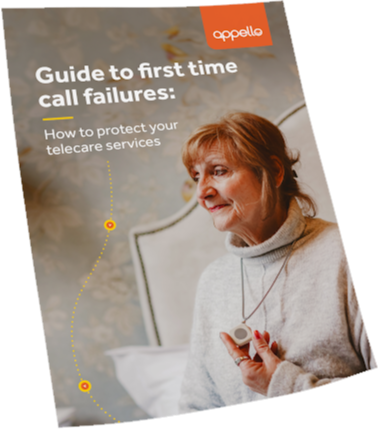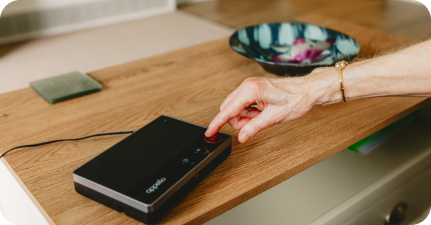First time call failures are a significant safety concern but can often fly under the radar. It’s vital housing providers get to grips with the issue and take the necessary steps to protect the people using telecare services.
There’s been a steady rise in first time call failures over recent years. But, despite reports from various sources highlighting the problem, this has not been widely discussed or publicised. As a result, many housing providers are not aware of the impact these failures are having on their telecare services.
Below, we take an in-depth look at the importance of reporting on failed calls and what information you should ask your monitoring centre to provide.
First time call failures – the key facts
1
First time call failures occur when a telecare alarm call takes multiple attempts to connect.2
This can cost valuable time in an emergency, delaying the response.3
With the rollout of the new digital network in progress, old analogue telecare equipment is increasingly vulnerable to compatibility issues, leading to a knock-on increase in failed calls.4
There’s no one standard figure for first time call failures, as the rates can vary depending on a number of factors. However, current reports show these range from 11-30%, which represents hundreds of thousands of telecare alarm calls with delayed responses, demonstrating instances where people at risk haven’t been able to get access to the critical support they needed.5
You can find out more with our First Time Call Failure (FTCF) rate report [Updated Monthly]Are your telecare services experiencing first time call failures?
First time call failures can only be identified after the event. The person who has made the call does not get a notification that it has failed – it simply seems as if the call is not being answered. Plus, the operator at the monitoring centre is also unaware the alarm call has not connected, as this can only be determined by later analysis.
This means the only way to know how your telecare services are impacted by call failures is to ask your monitoring centre to report on this.
Regular reporting will help you to:
- Understand the scale of the issueThis is important so you can confirm the extent of the problem and determine which properties and equipment are most affected by first time call failures.
- Benchmark your telecare servicesOnce you have a baseline figure, you can keep track of this for an early warning that your first time call failures are increasing.
- Identify what to prioritise with upgrade plansEvidence suggests certain analogue equipment and protocols are more likely to experience first time call failures. You can analyse failed calls to highlight trends, which can assist with your priorities and timescales for upgrading to digital telecare.
“It is a known risk that some analogue telecare devices may not be digitally compatible or perform as reliably on digital networks.”
Stephen Kinnock
Minister of State for Care Department of Health and Social Care

What information should your monitoring centre provide?
Start by asking your monitoring centre for an up-to-date report showing the monthly breakdown of first time call failures over the last twelve months. This will give you a clearer picture of your current position.
Your monitoring centre should be able to track this information and provide you with a report that shows the total number of telecare calls per month, alongside the total number of first time calls that failed. For ease of comparison, you can also ask to include a percentage for the figures.
Following this initial report, you should also request ongoing reports so you can keep track of the situation.
Reducing the risk of first time call failures
Of course, monitoring your call failures is only the first step.
With the ongoing rollout of the digital network, it’s likely we’ll see further increases in first time call failures unless action is taken now. There’s also a danger the rates will spike when the ISDN withdrawal begins later this year, as this has bridged the gap between compatibility issues for many monitoring centres.
The safest solution is a robust, future-proof digital system that is fully compatible with the digital network. This reduces the risk of first time call failures, ensuring your customers are protected and can get help when they need it the most.
We understand the transition to digital telecare can feel daunting, though. That’s why first and foremost, we strive to give you all the facts about what will and won’t work after the analogue switch-off so you can make decisions with confidence.
You can find more details on the issue of first time call failures in our latest guide, which is available to download now

Talk to us to discuss your requirements and find out about our cost-effective and future proof digital solutions.



